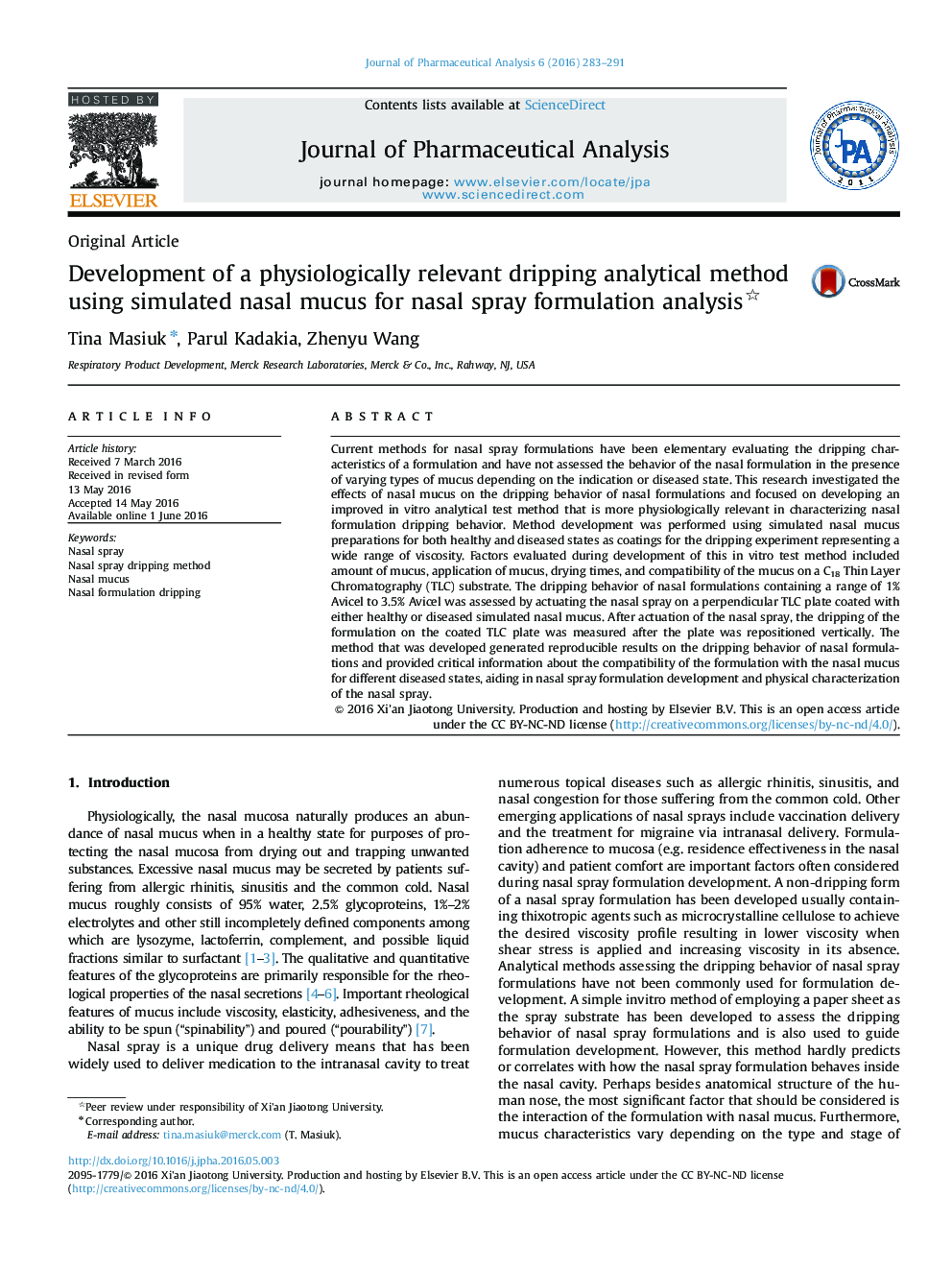| Article ID | Journal | Published Year | Pages | File Type |
|---|---|---|---|---|
| 8521376 | Journal of Pharmaceutical Analysis | 2016 | 9 Pages |
Abstract
Current methods for nasal spray formulations have been elementary evaluating the dripping characteristics of a formulation and have not assessed the behavior of the nasal formulation in the presence of varying types of mucus depending on the indication or diseased state. This research investigated the effects of nasal mucus on the dripping behavior of nasal formulations and focused on developing an improved in vitro analytical test method that is more physiologically relevant in characterizing nasal formulation dripping behavior. Method development was performed using simulated nasal mucus preparations for both healthy and diseased states as coatings for the dripping experiment representing a wide range of viscosity. Factors evaluated during development of this in vitro test method included amount of mucus, application of mucus, drying times, and compatibility of the mucus on a C18 Thin Layer Chromatography (TLC) substrate. The dripping behavior of nasal formulations containing a range of 1% Avicel to 3.5% Avicel was assessed by actuating the nasal spray on a perpendicular TLC plate coated with either healthy or diseased simulated nasal mucus. After actuation of the nasal spray, the dripping of the formulation on the coated TLC plate was measured after the plate was repositioned vertically. The method that was developed generated reproducible results on the dripping behavior of nasal formulations and provided critical information about the compatibility of the formulation with the nasal mucus for different diseased states, aiding in nasal spray formulation development and physical characterization of the nasal spray.
Keywords
Related Topics
Health Sciences
Pharmacology, Toxicology and Pharmaceutical Science
Pharmaceutical Science
Authors
Tina Masiuk, Parul Kadakia, Zhenyu Wang,
